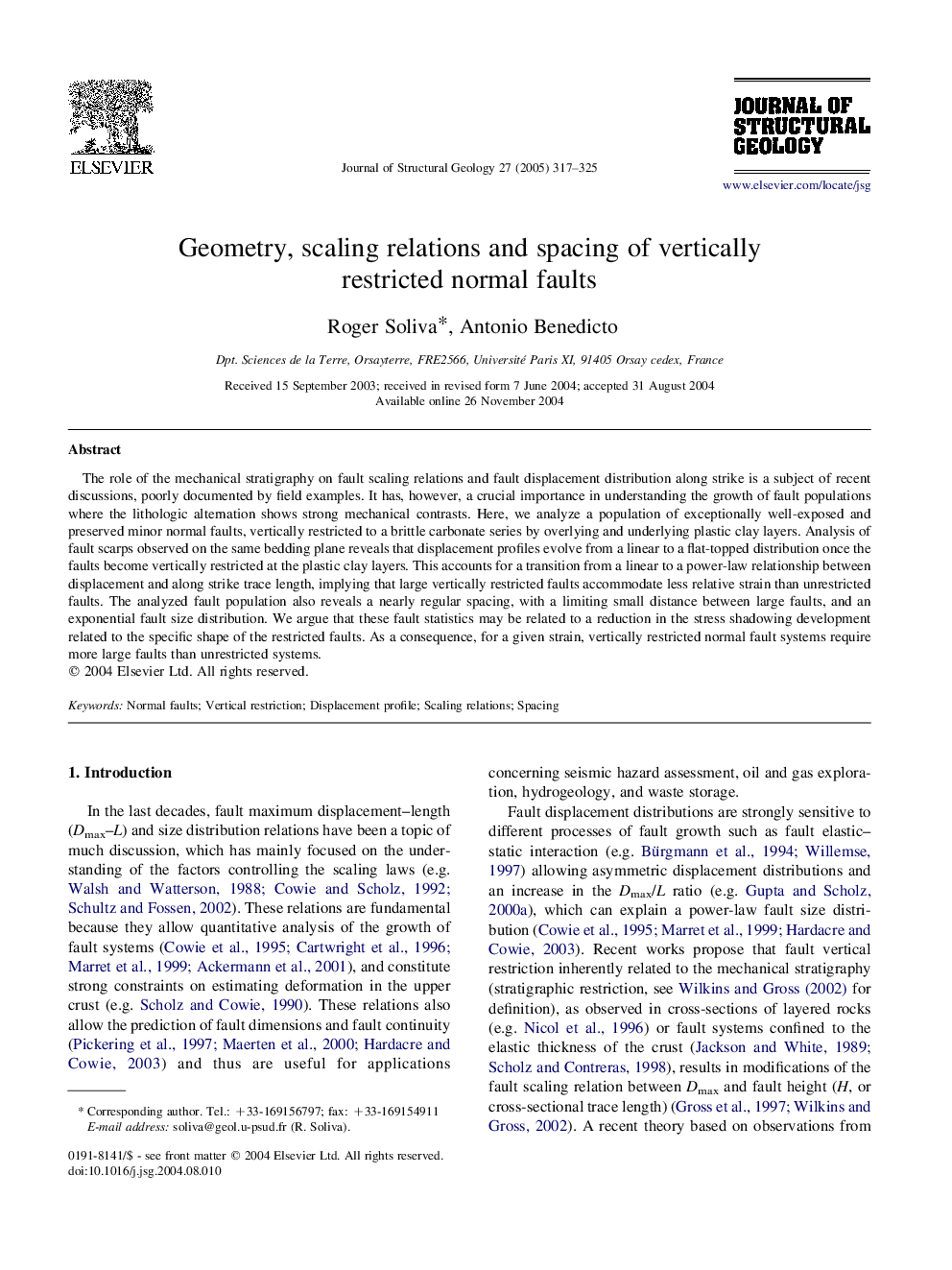| Article ID | Journal | Published Year | Pages | File Type |
|---|---|---|---|---|
| 9536364 | Journal of Structural Geology | 2005 | 9 Pages |
Abstract
The role of the mechanical stratigraphy on fault scaling relations and fault displacement distribution along strike is a subject of recent discussions, poorly documented by field examples. It has, however, a crucial importance in understanding the growth of fault populations where the lithologic alternation shows strong mechanical contrasts. Here, we analyze a population of exceptionally well-exposed and preserved minor normal faults, vertically restricted to a brittle carbonate series by overlying and underlying plastic clay layers. Analysis of fault scarps observed on the same bedding plane reveals that displacement profiles evolve from a linear to a flat-topped distribution once the faults become vertically restricted at the plastic clay layers. This accounts for a transition from a linear to a power-law relationship between displacement and along strike trace length, implying that large vertically restricted faults accommodate less relative strain than unrestricted faults. The analyzed fault population also reveals a nearly regular spacing, with a limiting small distance between large faults, and an exponential fault size distribution. We argue that these fault statistics may be related to a reduction in the stress shadowing development related to the specific shape of the restricted faults. As a consequence, for a given strain, vertically restricted normal fault systems require more large faults than unrestricted systems.
Related Topics
Physical Sciences and Engineering
Earth and Planetary Sciences
Geology
Authors
Roger Soliva, Antonio Benedicto,
